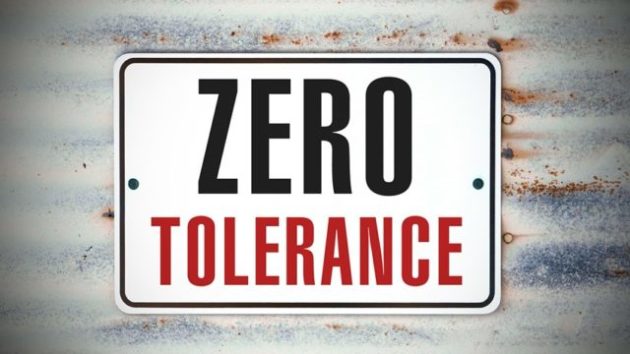‘Zero Tolerance’ Policies and the Making of a Preschool Pariah
The “Three Rs” used to stand for reading, writing, and arithmetic. Now, with zero-tolerance policies that ignore facts and logic, it’s reading, writing, and ridiculous.
Caitlin Miller, aged five, of Hoke County, North Carolina was suspended from kindergarten after making shooting motions with a stick during a recess game of “Kings and Queens” (Caitlin was the royal security detail). Citing the need to provide “a safe and orderly environment for learning,” the school uses a zero-tolerance policy for “assaults, threats or harassment from any student.” The suspension letter from the assistant principal advises that Caitlin was being punished for “turning a stick into a gun and threatening to shoot and kill other students.”
This episode follows a report of disciplinary action earlier in March against four-year-old preschooler Hunter Crowe. Hunter was suspended for seven days because – according to Jackson’s mom – staff alleged he brought a “shotgun bullet” into the preschool. Closer examination indicated the offending item was, in fact, an empty .22 shell casing, which Hunter picked up after a weekend with his grandfather, a police officer, learning gun safety. Hunter didn’t threaten or hurt anyone, but simply brought the spent casing along as something to share with his friends. The preschool, however, apparently views this (and Hunter’s use of other toys as “pretend” guns) as a sign of a troubled or degenerate personality.
The preschool director’s letter explains that Hunter had already been told that “guns, hunting, etc., are not subjects that are to be discussed at school,” and that the punishment is intended as a “learning experience” that will lead to a “new outlook and understanding about these issues and the safety of his fellow classmates.” Hunter’s mother says she was warned that if Hunter’s “enthusiasm for guns continued, he’d be permanently expelled.” (What next? A demand that Hunter change his name because it is associated with the “oppression of the environment”?)
Both Caitlin and Hunter are hurt and confused about why they are being banished from school. For adults, the reason is fairly obvious. As we’ve noted previously, these incidents represent a larger trend in schools from kindergarten to high school and beyond to marginalize lawful firearms and firearm use as abnormal by prohibiting speech about guns, drawing pictures of guns, wearing clothing depicting guns (even entirely fictional guns), pointing a “finger gun,” chewing food into maybe-gun shapes, and other benign behavior. In an ad released last year, one group suggested that ordinary activities like reading a gun magazine or looking at a firearm-related video were among the sinister giveaways of an incipient mass murderer.
The ostensible reasons given for these blanket prohibitions are safety and the need for a secure learning environment, yet rules like these can’t legitimately be justified on safety grounds.
Unfortunately, enforcing such ridiculous restrictions has real and disproportionate consequences for good kids. Besides the immediate impact of a “corrective action” like suspension, these students face being stigmatized as “disruptive” or problem students with “behavioral issues” once these infractions are noted in their school records. In one case, a five-year-old kindergartner who pointed a crayon while making “pew pew” sounds was required to sign a “school safety contract” promising that she would not commit suicide or kill others, and had to respond to a “suicide/homicide assessment” questionnaire, with school officials recommending that the child see a psychiatrist. Such actions also have the potential to bring parents within the ambit of government oversight and investigation – Hunter Crowe’s mother was apparently told that in addition to the suspension, preschool officials would be notifying the state Department of Children and Family Services.
Educators pride themselves on valuing diversity, promoting inclusivity, and fostering the freedom of students to think imaginatively and creatively. Incidents like these, though, suggest that this tolerance extends only to students with views that conform to political and social ideals about firearms that educators endorse as desirable and “correct.” And we grade that as “Fail.”



Leave a Reply
Want to join the discussion?Feel free to contribute!